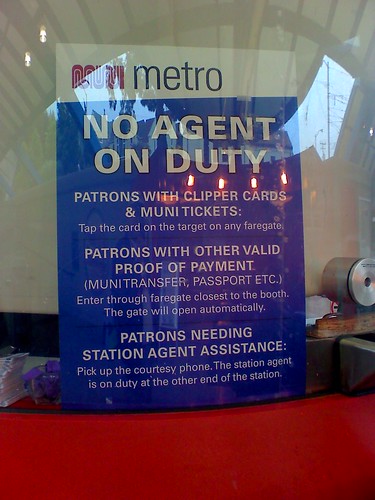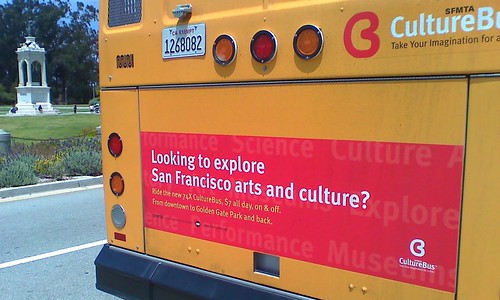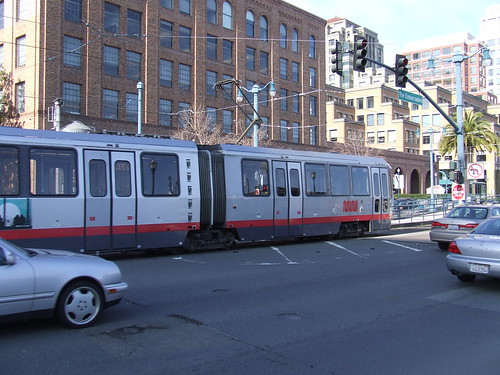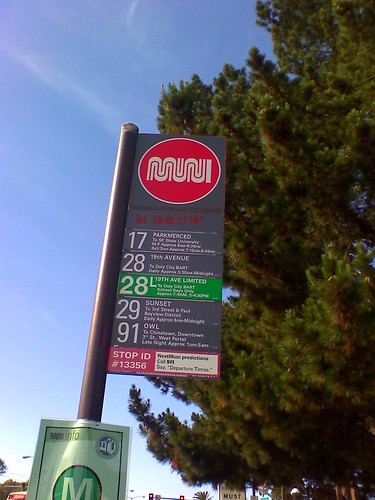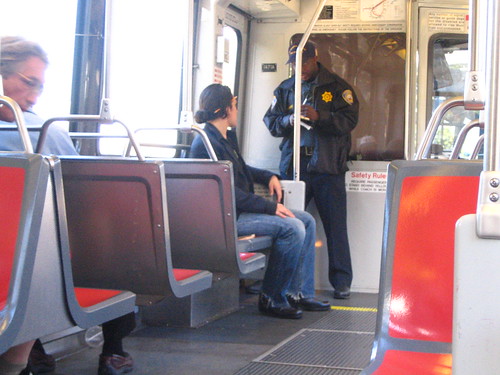This morning, I was reading an article written by Jessica Kwong for the SF Examiner about a Muni passenger who was written a ticket by a San Francisco Police Department officer for not paying their Muni fare with their Clipper card.
The article stated the passenger boarded the F-Market streetcar and used his Clipper card to tag at the entry. Ten minutes later, a SFPD officer asked for proof of payment from the passenger and tagged the passenger's Clipper card at the vehicle's card reader to verify. The card was rejected and the passenger was issued a $200+ citation for fare evasion. However, the passenger retrieved his Clipper card records from the Clipper Card website and it showed he did pay the fare. The passenger intends to contest the citation in court next week.
The news reporter also got statements from SFPD officials and SFMTA/Muni basically stating that a police officer tagging a customer's card on a vehicle card reader is sufficient enough and there's no problems with it.
However, with my expertise on writing about the Clipper Card for numerous years, there's some serious flaws with having police officers and fare inspectors to verify a passenger's card use by tagging a card reader. Here's why:
- When a passenger boards a Muni vehicle and tags their Clipper card upon entry, the card reader will immediately verify the transaction with a green light and single beep. The screen will also show the type of transaction completed ($2 fare deducted, transfer being used, or valid pass).
- Once the card is tagged, it cannot be tagged again on the same vehicle reader; this rule is called "passback." This is a standard rule used on all electronic transit fare cards to prevent a passenger from using the card for valid entry, and "passing back" the card to their friend or family member to tag the card again so they can score a free ride.
- The "passback" is removed after a certain set amount of time for those who ride the same bus again for a return trip (for example, if I board a 6-Parnassus bus at 1PM, have lunch, and board same exact bus at 2:15PM, the passback is eliminated and tagging my card won't result in a rejection).
- When a passenger transfers to another vehicle, the card is perfectly okay to tag and get the green light to enter. This is because they are boarding a new vehicle, even if they tag card on bus #1 at 1PM, and board/tag bus #2 at 1:10PM.
IMPROPER FARE INSPECTION: If a police officer or fare inspector verifies use by tagging the card to a Clipper card reader, it will either give a single beep/green light confirmation or red light/error confirmation. The single beep/green is because the "passback" was eliminated after the set window ended, but a red/error sound means the "PASSBACK" IS STILL ACTIVE. Cops and fare inspectors SHOULD NOT use this method of inspection because if they get the red light, and are ignorant to realize "passback" is active, the passenger gets a citation and have to waste their time at a court hearing to fight the charge.
As for the statement from SFMTA's Paul Rose saying there's "no concerns" about law enforcement officers verifying via the vehicle's card readers, he is half-correct and half-wrong. Here's why:
- Correct statement: This can only happen in the Muni metro. Only if a passenger tags their card upon entry to a subway station's fare gate, and a police officer verifies by tagging the card on a train's card reader, it will give the green light. The rules state when a Muni passenger tags their card upon entry via a faregate, it is not necessary to tag their card on the vehicle card reader when they board the train; but if a passenger tags their card in the vehicle (after tagging card to enter the metro station) and a police officer checks the card, say 10 minutes after on the vehicle card reader, it will result in a red light/denied message and is subject to a ticket, even though they have tagged their card lawfully at a Muni fare gate.
- Incorrect statement: There is a serious concern if a police officer verifies a passenger's Clipper card at the vehicle card reader because the "passback" may still be active on the card. Reason for this explained earlier in this blog entry.
Akit's Opinions:
In summary, if we assume the passenger does have proof from the Clipper Card website saying he did tag his Clipper card and was cited by a police officer, he should be found not guilty or have his case dismissed on the grounds that the officer improperly issued the ticket.
Due to the poor judgment of the police and SFMTA, and improper procedures to verify Clipper card use, strict policies needs to be written-up to prevent this from happening again.
Fare inspections SHOULD NEVER be verifying card use by using a vehicle's card reader because of the "passback" policy. ALWAYS use the handheld card reader.








